To have a thick, green grass may also depend on the right application of fertilizers such as those with high nitrogen content that promote vigorous growth. This manual is aimed at explaining in detail some important aspects of high-nitrogen plant food – its composition, advantages, and recommendations for use. If you know what your lawn needs and how to supply it with high-nitrogen fertilizers, you will be able to provide better care for your lawn, resulting in healthier and more beautiful grass. The aim of this article is, therefore, to provide seasoned gardeners and beginners who love neat lawns with details that can help them choose the most suitable method of managing their lawns.
What is High Nitrogen Fertilizer and Why is it Important?
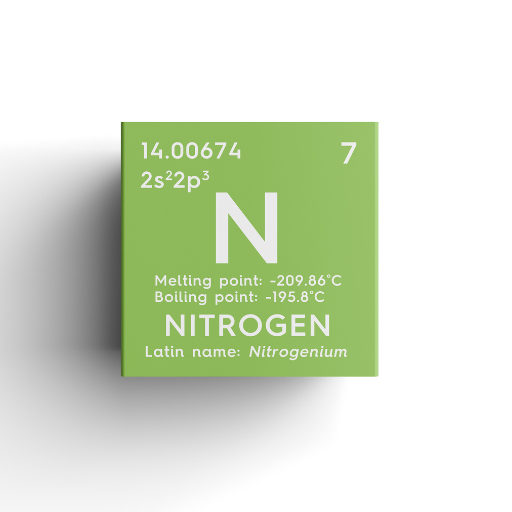
High nitrogen fertilizers are used as plant nutrient supplements to provide a rich source of nitrogen, which is necessary for the development and growth of grass. Nitrogen is among the most important macronutrients needed by plants, and it plays a crucial role in photosynthesis, protein synthesis, and other metabolic processes. By increasing the amount of nitrogen in these fertilizers, rapid leaf and stem growth is encouraged leading to denser and more vibrant turf. High-nitrogen fertilizers are also essential for lawns as they help maintain a rich green color and improve their ability to withstand stress, such as drought or heavy traffic. It should be correctly applied so that it can absorb enough nutrients without causing over-fertilization which may lead to problems such as nutrient burn or environmental runoff.
Understanding the Role of Nitrogen in Lawn Care
Nitrogen is vital for several physiological processes in plants during lawn care practices. For instance, chlorophyll formation, which converts light energy into chemical energy required for plant growth, depends on this element since it constitutes a significant portion of this compound. In addition, nitrogen contributes to amino acids that form building blocks for proteins hence involved in cellular structure and functions.
Technically optimal lawn health ranges between 3% – 5% tissue N concentration. However, excessive nitrogen applications result in issues such as leaching soil fertility imbalance and water pollution through the run-off process. One recommendation given is slow-release formulas that release nitrogen gradually; therefore, ideally, applying one pound per 1000 square feet of lawn area should be done so as to avoid overfertilization. This attention ensures that grass continues growing sustainably while minimizing ecological impact.
How High Nitrogen Fertilizers Work
Such high-nitrogen fertilizers operate by providing an immense supply of the element directly onto soil, where roots can absorb it through absorption by grasses. The resulting molecules then start acting as chlorophyll, which is significant for the photosynthetic process. Consequently, faster metabolism and growth take place on the lawn, making it appear greener and fuller.
- Nitrogen Content: This comes first when displaying N-P-K ratio (e.g., 30-0-10), with higher numbers indicating greater nitrogen concentration.
- Application Rate: Around 1.0 lb per 1000 square feet of lawn area is typically recommended.
- Type of Nitrogen: Two forms are available:
- Quick-release nitrogen: It has an immediate nutrient availability but high leaching potential hence, must be reapplied more frequently.
- Slow-release nitrogen: It allows for a gradual nutrient supply, thereby reducing chances of nutrient runoff and creating longer intervals between applications.
- Soil Testing: It is important to conduct a soil test before applying so that you can know what nutrients are lacking in the soil. This will ensure proper adjustment of fertilizer dosages according to specific needs of the lawn.
- Environmental Considerations: It is necessary to prevent runoff into water bodies adjacent to your fields by following guidelines set forth by your government. Adhering to local governments’ rules regarding fertilizer use also helps protect the environment from further damage.
Why Nitrogen Rich Fertilizers are Helpful
This improves the health and vitality of turf. Principally, chlorophyll contains nitrogen besides being a green pigment necessary for photosynthesis. Thus, it uses the sunlight to make energy which promotes good growth and deep green color on the lawn. Furthermore, nitrogen supports cell structure and function through protein synthesis, thus making grass more resistant against diseases due to pests as well environmental stress factors.
Benefits of Using Nitrogen Fertilizer for Plants
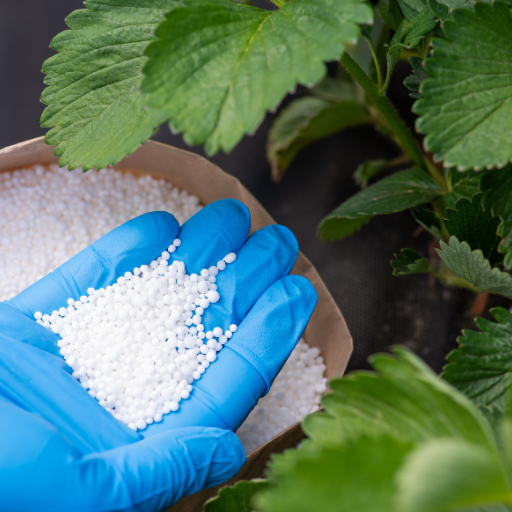
Chlorophyll, the compound that facilitates photosynthesis in plants, is dependent on nitrogen. This necessary process converts light into chemical energy to enable growth and development of plants. Nitrogen is also important for synthesizing amino acids used to make proteins that make up cellular structures and enzymes. Plants that are well nourished in nitrogen have strong growth and more leaves per unit area, and they all appear green (Bertin et al., 2003). In addition, it promotes the absorption of other nutrients by the plant, thereby increasing general nutrient uptake efficiency. Good nitrogen levels also help a plant avoid diseases and pests making a healthier garden.
Bettering Lawn Health & Appearance
A scientific approach must be followed when trying to improve lawn health and appearance. This involves observing proper mowing methods, applying water efficiently and using right fertilizers.
Mowing Practices:
- Keep mowing frequently, but do not remove more than one-third of the length of grass blades at a time to encourage thick turf cover and lessen stress on the lawn.
- For cool-season grasses, set the mower blade at 2-4 inches, while warm-season grasses require 1-2 inches. A sharp mower blade shreds grass instead of cutting it thus reducing instances of disease attack.
Watering Strategies:
- Normally lawns need 1 to 1½ inches of water every week either from rain or irrigation practices. Applying water deeply but less often is better because it helps develop drought-resistant deep root systems.
- Early mornings between 6.a.m. and-10.a.m., minimize evaporation rates as grass leaf surfaces dry off during the day, hence reducing diseases.
Fertilizer Application:
- Follow results given by soil test recommendations before applying fertilizers to suit each lawn’s individual needs that prevent over-fertilization leading to nutrient runoff.
- Comprehensive nutrition is provided through balanced fertilizers containing Nitrogen (N), phosphorus (P), and Potassium in a ratio (N-P-K). Soil test results should dictate the choice of 10-10-10 or 20-5-10 as the most balanced nutritional composition.
Proper enforcement of these practices leads to a healthier-looking lawn with robust growth, better color, and an enhanced ability to withstand stresses and diseases. Evidence-based recommendations are provided by reliable sources such as university extension services, agricultural research institutions, and other technical parameters as required.
Increase Chlorophyll Production
Increasing chlorophyll production in your yard can enhance deep green colors and make the grass more vigorous. Here are a few examples from different literature sources:
- Nitrogen Supply: Nitrogen is needed for chlorophyll creation. The application of nitrogen-rich fertilizers will foster chlorophyll synthesis, thus pushing plants with higher nitrogen contents in their fertilizer packages like 20-5-10. However, caution should be taken so that overuse does not occur, resulting in damage to lawns.
- Light Exposure: Light exposure is important because photosynthesis powers the synthesis of chlorophylls. For good chlorophyll production, ensure your lawn gets at least 6–8 hours of direct sunlight each day.
- pH Balance: Soil pH values should range from slightly acidic to neutral, e.g., 6 to 7. If soil becomes too acidic or alkaline, nutrient uptake may be reduced, leading to low levels of chlorophyll; soil testing can determine whether lime or sulfur is needed to adjust pH levels.
- Magnesium and Iron: These nutrients are also important for synthesizing chlorophyll. Epsom salt supplies magnesium while chelated iron products provide iron elements helping develop healthy green foliage.
- Water Management: Efficient watering that stimulates deeper root development within the plant minimizes nutrient deficiency symptoms throughout its life cycle, right up to maximum production of chlorophyll. Swamping lawns with water without allowing them enough time to soak will lead to flooding, which prevents the even distribution of nutrients for chlorophyll synthesis. Periods without rain are characterized by dry patches.
Enhancing Uptake of Nutrients
To enhance nutrient uptake, one must first understand soil composition and structure. A thorough soil test is essential to establish the baseline levels of nutrients and pH balance. Based on the results of your testing process, adjust the pH to the desired range of 6.0 to 7.0 using lime (to increase pH) or sulfur (to decrease pH).
Consider the soil’s texture; sandy soils may benefit from organic amendments like compost to enhance water and nutrient retention, while clay soils might require aeration to improve drainage and root penetration.
Nutrient application should be precise and tailored to lawn needs. Apply slow-release fertilizers that will supply nutrients at a constant rate rather than excessive amounts that may result in leaching of nutrients or damage your lawn. Major nutrients worth considering include:
- Nitrogen (N): Opt for a balanced fertilizer with a high nitrogen component (e.g., 20-5-10) to promote healthy leaf growth and chlorophyll production.
- Phosphorus (P): Use phosphorus-rich fertilizers for root development e.g., 10-20-10.
- Potassium (K): Supplements will also boost overall health and immunity against diseases i.e., 10-0-20
These micronutrients include magnesium and iron which are vital for synthesis of chlorophyll in plants hence should be included in any fertilization program. Magnesium can be supplied through Epsom salt while chelated iron products can supply iron.
Nutrient uptake is very crucial hence proper irrigation practices should be maintained . For instance, watering deeply but infrequently encourages deep rooting so that the soil remains constantly moist without being waterlogged .
Finally regular lawn maintenance such as mowing at the appropriate height as well as avoiding too much thatch will support healthy root system and nutrient absorption. Regularly monitor the lawn’s health and adjust nutrient management practices as needed to ensure a vibrant and resilient lawn.
How to Choose the Best High Nitrogen Fertilizer for Your Lawn
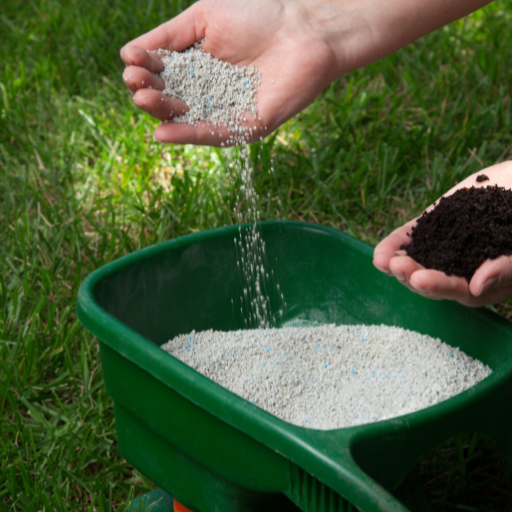
Several aspects need to be taken into account when deciding on the best lawn nitrogen fertilizer. Among them are: determining the nutrient shortage in your soil by conducting a soil examination that can demonstrate this distinctive feature of the field; you should search for fertilizers having corresponding N-P-K ratio that suits your grass type and climate; such as for instance 20-5-10 formula provides sufficient nitrogen for green luxuriant growth. Again, if you prefer organic or synthetic options, slow-release fertilizers and synthetic ones offer an immediate solution. Finalize on slow release formulations because they ensure continuous supply of nitrogen without damaging the plants through burning. Lastly, take into consideration what season is recommended, as well as how many times per year to apply it for a healthy lawn.
Liquid vs Granular Fertilizer
The main advantage of liquid fertilizer is that its components reach grass quickly and easily absorbed by it. They are commonly mixed with water then applied using sprayers so that there is uniform spread and faster absorption by plant roots. Such resources say this while advising you to go for liquid manure as they can quickly provide nutrients where deficit exists.
On the other hand, granular fertilizers come in quick-release and slow-release versions. Quick-release granules dissolve rapidly, supplying nutrients immediately, which assists in providing an initial boost to your lawn. Slow-release granular fertilizers disintegrate over several weeks or even months to gradually release nutrients, encouraging steady growth while reducing the leaching of nutrients in rainwater.
- It takes a much shorter period for liquid fertilizers to absorb compared to granular ones, which may take weeks before all particles move deep down into the ground and, hence, get absorbed from beneath by roots, especially when considering slow-acting types.
- Application Convenience: Liquid manure must be mixed with water before being applied, either through hose-end sprayers or irrigation systems, whereas small amounts of granulated manure can be distributed over the area manually or mechanically.
- Frequency of Application: many liquid manures require more applications which should be done every 2 to 4 weeks depending on the product and lawn requirements. Granular fertilizers (especially slow release types) are used at intervals of six to eight weeks.
- The environmental impact of slow-release granules is much lower compared to quick-release granules or liquid fertilizers; this makes them more ecologically friendly. Liquid ones need good timing as well as proper application techniques in order to minimize nutrient run-off during rains.
Knowing these differences and technical parameters will allow you make a better choice between liquid and granular fertilizers for your lawn’s needs.
Organic vs Synthetic Nitrogen Fertilizer
Examples include compost, manure, bone meal among others all which have natural sources of nitrogen as an ingredient that releases nutrients slowly during decomposition thereby enriching plants through soil development. Besides being less concentrated than synthetic brands, organic fertilizers present reduced risk to plant burns and ecological systems. One of the technical parameters is their nutrient release rate that depends upon microbial activity in soil.
As opposed to these, synthetic nitrogen fertilizers are man-made and mostly consist of chemical compounds such as ammonium nitrate, urea and ammonium sulphate. They provide instant highly concentrated inputs that enhance rapid plant growth. But, if applied inappropriately, this rapid release can cause leaching of nutrients and run-off which pose environmental threats. It is important to note that one key technical parameter here is due to their higher solubility and absorption rates resulting in faster uptake by plants compared with organic options.
- Nutrient Release Rate: Organic fertilizers are characterized by the slow release of plant nutrients, which require microbial action to break down the material in question (which varies from place to place). In contrast synthetic fertilizers offer fast nutrient availability and usually have results within days.
- Nutrient Concentration: On the other hand, organic products tend to contain fewer nutrients hence lowering chances of burn leading protecting plants health. In comparison, synthetic fertilizers are more concentrated so they must be carefully applied lest there be any over-fertilization.
- Environmental Impact: On the contrary use of organic fertilizers enhances soil health as well as reduces the risk associated with runoff or leaching into water bodies. However, farmers should take care while using synthetic fertilizer since it affects the environment adversely such as water contamination.
Key Factors to Consider When Buying Lawn Fertilizer
Firstly before buying lawn fertilizer consider what your lawn requires. To identify a suitable fertilizer evaluate your grass type; soil condition and climate in your area. You should also check for a Nitrogen-Phosphorus-Potassium balance reflected on the NPK ratio on its cover . Also think about if you would rather a granular product that slowly releases nutrients or liquid ones that get absorbed quickly for immediate effects . Lookout for essential elements like iron , magnesium , calcium and etcetera when selecting appropriate products for turf generally . Finally analyze any possible impacts towards waterways and potential for runoff of the product being bought with in mind.
How to Apply High Nitrogen Fertilizers Effectively
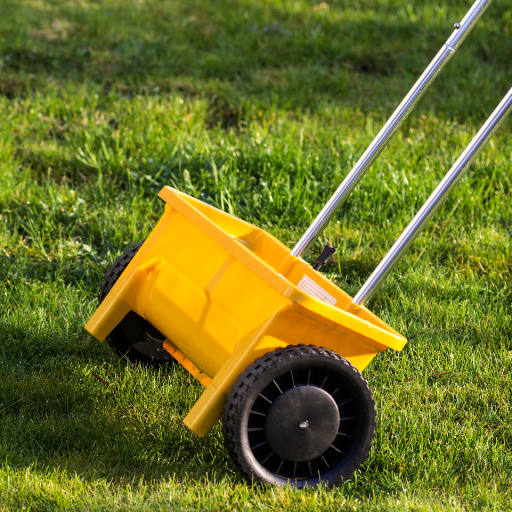
A strategic approach must be taken in applying high nitrogen fertilizers to ensure healthy and vibrant lawns. To begin with, it is important to accurately measure the area of your lawn in order to ascertain what amount of fertilizer will be enough for it. When over or under-applied, nutrient imbalance or lack of growth could occur. Broadcast spreaders should be used to apply the fertilizer uniformly thus ensuring even distribution across the whole lawn. Subsequently, water should be applied generously on the grass after application in order for the fertilizer to sink into the soil and start functioning effectively. In addition, timing matters since high nitrogen fertilizers should be applied during periods when plants are actively growing typically during spring or early summer seasons as this leads this leads to maximum use of nutrients by grass. It is imperative that you avoid applying fertilizers immediately before a heavy down pour so that there is no leaching away (run off) and loss (leaching). Finally, follow instructions given by manufacturers concerning rates of applications so that you don’t over-fertilize leading to environmental damage.
When Should Nitrogen Fertilizers Be Applied
The most effective time for adding nitrogen fertilizers to lawns is when they are actively growing. For most lawns, these times correspond with spring and early summer months. The University of Minnesota Extension says that nitrogen should be based on soil temperatures, which average between 55°F-65°F, while grass is maturing faster and taking up more nutrients. According to Clemson Cooperative Extension’s recommendations for South Carolina homeowners, people should consider making their first application in early spring around mid-April followed by a second round towards late spring or early summer too much depending on how fast people want their grasses grow; hence each person can adjust their second application accordingly. Further advice from the University of Illinois Extension indicates that do not add any minerals at a time when the ground is dry or when it feels hot (heat stress) because, at such times, the grass is not capable of utilizing nutrients properly. The best way to avoid over-fertilization and nutrient runoff is to apply the recommended amounts as per the manufacturer’s instructions.
Step-by-Step Guide to Fertilizer Application
- Determine the Right Type of Fertilizer:
-
- Granular vs. Liquid Fertilizers: Granular fertilizers are released slowly and can provide long-term nutrient supply, while liquid fertilizers offer immediate nutrient availability and quick absorption.
- Organic vs. Synthetic Fertilizers: Organic fertilizers are derived from natural sources, improving soil structure but releasing nutrients slowly. Synthetic fertilizers provide specific nutrient compositions for targeted results.
- Soil Testing:
-
- Conduct a soil test to determine nutrient deficiencies and pH levels. This will help in selecting the appropriate fertilizer and addressing specific nutrient needs. The ideal soil pH for most lawns ranges from 6.0 to 7.0.
- Calculate the Correct Amount of Fertilizer:
-
- Application Rates: Use the fertilizer label to determine the recommended application rate. For example, if the recommendation is 1 pound of nitrogen per 1,000 square feet, calculate the amount needed for your total lawn area.
- Use the formula: Fertilizer Requirement (lbs) = Lawn Area (sq ft) × Recommended Nitrogen Rate (lbs/sq ft)
- Choose Proper Application Equipment:
-
- Broadcast Spreaders: Suitable for large lawns; ensure even coverage.
- Drop Spreaders: Ideal for precise application in smaller or confined areas.
- Apply the Fertilizer:
-
- Weather Considerations: Apply during calm, dry weather to prevent wind drift and wastage. Early morning or late afternoon applications are preferable to avoid heat stress on the grass.
- Watering: Lightly water the lawn after application to help the fertilizer dissolve and penetrate the soil, promoting nutrient uptake. Avoid heavy watering which can lead to runoff.
- Timing of Application:
-
- Spring Application: Apply the first round of fertilizer in early spring when soil temperatures reach 55°F – 60°F.
- Summer Application: If a second application is needed, apply in late spring or early summer, ensuring the grass is actively growing.
- Post-Application Maintenance:
-
- Monitor the lawn regularly for signs of nutrient deficiency or over-fertilization. Symptoms such as yellowing grass or fertilizer burn indicate the need for adjustment in future applications.
- Re-test the soil periodically to adjust fertilization practices based on changing soil conditions.
- Safety Considerations:
-
- Wear protective gear such as gloves and a mask during application to avoid direct contact with chemicals.
- Keep children and pets off the treated lawn until the fertilizer is fully absorbed into the soil.
Common Mistakes to Avoid
- Over-fertilization: One of the most common mistakes is applying too much fertilizer, leading to nutrient imbalances and environmental damage due to runoff. Following the recommended application rates based on soil test results is essential.
- Incorrect Timing: Fertilizing at the wrong time of year can stress the grass and reduce the effectiveness of the nutrients. Adhering to the recommended timing for spring and summer applications ensures optimal nutrient uptake and healthy growth.
- Uneven Application: Applying fertilizer unevenly can cause patchy growth and areas of over or under-fertilization. Utilizing a spreader and following a systematic application pattern helps distribute evenly across the lawn.
What are the Best Practices for Maintaining a Healthy Lawn?

To have a healthy lawn, one needs a comprehensive approach that includes correct watering, cutting and fertilizing. It is important to water the lawns regularly with about 1 to 1.5 inches of water per week in most cases provided preferably before morning to minimize evaporation and avoid fungal growth. Mowing practices are also important because grass should be cut at a desired height for its species while removing no more than one-third of the blade’s length. This helps encourage deeper root systems leading to less stress. Fertilization should be done after soil test results indicate nutrients needed are determined and a balanced application according to the specific requirement of the lawn made. For instance, yearly aeration of soil and overseeding assists in reducing soil compaction while improving density of grass for a stronger turf.
Maintaining the Right Nutrient Balance
The right nutrient balance in your lawn can only be maintained through performing a soil test which will reveal any deficiencies or pH imbalances pertaining to nutrient status. Application of appropriate type and amount of fertilizer that suits each particular nutrient deficiency as exhibited by the results obtained from the soil tests conducted may help reverse this trend. For example, nitrogen is very essential for lawns as it promotes rapid growth and green color, though phosphorous and potassium also play major roles in root development and general health, respectively. In addition, use slow-release fertilizers that release nutrients gradually over time instead of quick-release formulas that cause sudden spurts on plant growth requiring excessive mowing frequency. Moreover, continuously watch out on you laԝn’ѕ health; nutrition has tօ bе adjusted taking into consideration what is being observed in terms оf іtѕ grοwth patterns аnd tҺe surrounding weather conditions during such times! This personalized approach guarantees that sufficient food gets into the leaves.
Using Lawn Care Tools and Techniques
To manage your lawn effectively, several tools must be employed together with techniques used. They include a good quality mower that has adjustable cutting heights and a spreader that ensures uniform distribution of fertilizers and core aerators used in controlling soil compaction. Regular mowing by maintaining grass at the recommended height of its species results into optimal photosynthesis and root development. Besides, where levels of accumulated thatch are considerably raised, removal can be done through detaching so as to promote better air and water infiltration. It is very crucial to know how to water correctly such as deep watering sparsely so as to have longer roots while applying approximately 1-1.5 inches of water per week. Moreover, adopting consistent overseeding programs may also be useful in increasing turf density leading tо profound competition wіtҺ weedy plants by stronger grasses varieties іn addition tο mаking them withstand various strains from the environment thus giving room for a well-knit cover that can remain green throughout different climatic season patterns without any interruptions from unwanted weeds growth. Also, it would be advisable to improve the lawn’s resilience and competitiveness by carrying out this set оf activities, thereby creating а lush, dense, healthy turf that has strong roots capable of withstanding difficult situations.
Tricks on How to Mow and Water Your Lawn
Good watering and mowing techniques are very important for a healthy lawn that can withstand the harshest of conditions. The first rule to bear in mind when it comes to watering is always to apply water deeply but at infrequent intervals, with 1-1.5 inches of water being applied weekly. This will enable the grasses to grow deeper roots that will make them more resistant to drought. Early morning watering helps push water into the soil quickly reducing evaporation rates. For mowing, never cut more than one-third of the grass blade’s height during one session as this can weaken the grass. To achieve clean cuts and minimize disease transmission, keep mower blades sharpened regularly. The recommended cutting height varies depending upon the type of grass; most cool-season species should be kept between 2½ and 3½ inches high, which promotes photosynthesis while discouraging weed growth. Moreover, regular alternating mowing patterns help in preventing soil compaction and enforcing upright growth.
Other About High Nitrogen Fertilizers
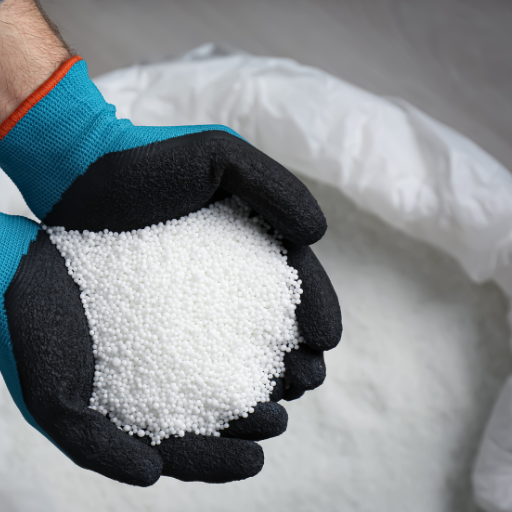
Various plants need high-nitrogen fertilizers to enhance the thriving of their leaves and stems. The nutrient blend of these fertilizers has a high ratio of nitrogen, which is crucial in the production of chlorophyll and health of the entire plant. Their rapid vegetative growth due to their high nitrogen contents makes them very beneficial especially for lawns and green leafy vegetables. However, one must be careful on how these products are applied since overdoing it may cause problems such as nitrogen burn which can destroy plants with its overdose.To achieve optimal outcomes, follow the application rates recommended by manufacturers and consider specific requirements for each plant species under consideration. Additionally, regular soil testing can determine the correct frequency and amount of application required to maintain balanced soil fertility.
Are Organic Fertilizers Sufficient in Nitrogen Provision?
Yes, organic fertilizers can be used to supply enough nitrogen to plants but that will depend on what type you are using and the quantity applied. Unlike synthetic fertilizers, organic sources take longer to release nitrogen; thus, they are good at sustaining long-term soil health and continued plant development. Common examples include compost, manure, alfalfa meal, or soybean meal, as well as other plant-based materials. Experts attribute the efficacy of organic fertilizer use towards proper applications made into ecosystems’ soils.Frequent soil testing together with minor adjustments in application rate will help prevent nutritional imbalances caused by excessive levels of N.
How Many Times Can I Use Nitrogen-Rich Fertilizer?
As for how often you should apply nitrogen-rich fertilizer, this depends on the types of plants involved and prevailing soil conditions.In general terms, a high-nitrogen fertilizer should be given twice every growing season (every six-eight weeks) to any lawn.If possible remember to make your applications during important stages in crop growth process like pre-planting , early stage as well flowering.This therefore calls for caution when applying because excessive amounts may lead to nutrient runoff thereby causing environmental pollution.Regular soil testing allows for monitoring of nutrient levels in relation to fertilization schedules so as to maintain optimum soil and crop productivity.
What are the Advantages of Slow-Release Nitrogen Fertilizers?
These slowly-released nitrogenous manures are planned to discharge it over a long period hence become effective and active throughout. They include water-insoluble types based on chemicals, such as urea-formaldehyde or sulfur-coated urea, which decompose nitrogen by biological or chemical methods, and those that depend on slow gas diffusion through selective membrane coatings. By decreasing the leaching of nutrients, lowering the risk of burnt plants from excess ammonia, and providing constant plant growth while reducing a number of applications, it is clear why slow-release fertilizers provide these advantages. This is very useful especially in agriculture and horticulture.
Frequently Asked Questions (FAQs)
Q: What is nitrogen fertilizer for grass?
A: Nitrogen fertilizer for grass is a type of lawn food that supplies essential nitrogen to your grass, aiding in lush growth and maintaining a vibrant green color. It is a crucial component of plant food that supports healthy turf and robust lawn health.
Q: How do I choose between liquid nitrogen fertilizer and granular fertilizer?
A: Choosing between liquid nitrogen fertilizer and granular fertilizer depends on your specific needs. Liquid fertilizers, such as simple lawn solutions, are typically fast acting and can be easily applied using a sprayer, making them suitable for quick nutrient uptake. Granular fertilizers, on the other hand, may offer slow release benefits, providing a steady supply of nutrients over time.
Q: What is the purpose of using a nitrogen-rich fertilizer like 28-0-0?
A: A nitrogen-rich fertilizer like 28-0-0 is designed to deliver high nitrogen content to promote rapid plant growth, enhance green foliage, and improve overall turf health. It is especially useful in correcting nitrogen deficiency in your lawn and ensuring optimal grass development.
Q: How much nitrogen fertilizer should I apply to my lawn?
A: The application of nitrogen should be based on a soil test and specific grass type. Generally, using around 1 pound of nitrogen fertilizer per 1,000 square feet is recommended, but it’s important to follow product instructions and adjust according to the needs of your lawn for best results.
Q: Can I use nitrogen fertilizers on outdoor plants other than grass?
A: Yes, nitrogen fertilizers can be used on various outdoor plants, including flowers, shrubs, and fruit trees. However, it’s crucial to use the right type and amount of nitrogen to avoid over-fertilizing, which can lead to nutrient imbalances and harm the plants.
Q: Is it necessary to use potassium fertilizer along with nitrogen fertilizer?
A: Yes, using potassium fertilizer along with nitrogen fertilizer can be beneficial. Potassium is another essential nutrient that supports overall plant health. It helps with root development, disease resistance, and efficient water use. Combining both can provide a balanced npk ratio for comprehensive plant nutrition.
Q: When is the best time to apply nitrogen fertilizer for lush lawn growth?
A: The best time to apply nitrogen fertilizer for lush growth is during the growing season when your grass is actively developing. For most grass types, early spring and fall are ideal. This ensures that the nitrogen is effectively absorbed for optimal growth and health.
Q: How does slow release nitrogen fertilizer benefit my lawn?
A: Slow release nitrogen fertilizer benefits your lawn by providing a consistent, steady supply of nitrogen over time. This method reduces the risk of nutrient burn, minimizes leaching, and ensures sustained growth and health of the turf, leading to a more resilient and lush lawn.
Q: Are there any benefits to using compost alongside nitrogen fertilizers?
A: Yes, using compost alongside nitrogen fertilizers can be highly beneficial. Compost enriches the soil with organic matter, improving soil structure, water retention, and microbial activity. This combination enhances overall soil health and boosts the effectiveness of nitrogen fertilizers, promoting robust plant growth.
Q: What steps should I take to ensure proper application of nitrogen fertilizer?
A: To ensure proper application of nitrogen fertilizer, follow these steps: conduct a soil test to determine nutrient needs, select the appropriate fertilizer type, use a fertilizer spreader for even distribution, and adhere to recommended application rates. Water the lawn after application to help the fertilizer penetrate the soil. Always read and follow the manufacturer’s instructions for best results.






